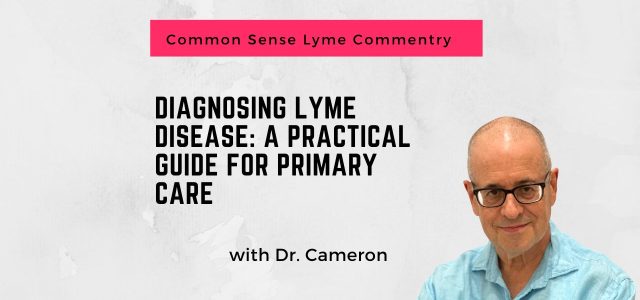
As we continue to grapple with the long-term effects of COVID-19 and deepen our understanding of post-infectious syndromes like Long COVID, it’s become increasingly clear: not all infections resolve cleanly. Some linger, disrupt multiple systems, and defy simplistic explanations.
Lyme disease is one of those conditions.
For years, Lyme has presented primary care clinicians with diagnostic challenges. The symptoms can be vague or migratory. Testing may be unreliable—especially early in the disease. And many patients are told they’re fine, even as they continue to decline.
As a physician experienced in treating the chronic manifestations of Lyme disease, I’ve developed a practical, three-step diagnostic framework to help primary care colleagues recognize Lyme disease more accurately—and earlier. This approach prioritizes clinical judgment, symptom evolution, and when needed, collaboration with experienced colleagues.
Step 1: Recognize the Clinical Syndrome
The first step is determining whether the patient’s symptoms fit the clinical profile of Lyme disease.
Early signs may include:
- Erythema migrans (EM) rash
- Fever, chills, fatigue
- Headache, muscle aches
Later or persistent signs may include:
- Migratory joint pain (especially knees)
- Facial palsy
- Neuropathic pain
- Cognitive dysfunction (“brain fog”)
- POTS (Postural Orthostatic Tachycardia Syndrome)
- Mood changes, sleep disturbance
Lyme disease remains a clinical diagnosis, especially in early stages.
If an EM rash is present, treatment should begin immediately—no testing required. If the rash is absent but exposure history and symptom pattern suggest Lyme, testing may support the diagnosis, but should not overrule clinical judgment.
Always obtain a thorough exposure history: tick activity, geography, outdoor activity, seasonality, and any past unexplained viral or flu-like illness that may have gone unrecognized.
Step 2: Evaluate Stage and Complexity
Next, assess how far the illness has progressed and how many systems are involved.
Stages of Lyme may include:
- Localized: EM rash, flu-like symptoms
- Disseminated: Joint pain, Bell’s palsy, POTS, cardiac symptoms
- Persistent or chronic: Fatigue, cognitive dysfunction, neuropathy, autonomic instability
Ask about prior antibiotic treatment and whether symptoms returned or worsened. Many patients who eventually develop chronic symptoms were only partially treated—or diagnosed late.
Also ask whether testing or treatment for co-infections like Babesia, Bartonella, Ehrlichia, or Anaplasma was ever considered. These organisms can complicate recovery and worsen neurologic or systemic symptoms.
Step 3: Use Labs Judiciously—and Interpret in Context
The standard CDC two-tier serologic testing (ELISA followed by Western blot) is widely used—but has important limitations:
- Low sensitivity early in infection
- May be negative even in later stages of illness
- Originally designed for surveillance, not for ruling out individual cases
If clinical suspicion is high and tests are negative, do not let testing alone dictate the next step. Treat the patient, not just the paperwork.
Consider also:
- Co-infection panels (Babesia, Bartonella, etc.)
- CBC, CMP, CRP, and liver enzymes for supportive inflammatory patterns
- Thyroid, vitamin D, and B12 levels when fatigue and neurologic symptoms persist
More importantly: when complexity increases—especially with neurologic, cardiac, or psychiatric symptoms—consultation matters.
Collaborating with a clinician experienced in Lyme disease or tick-borne infections can help clarify diagnosis, refine treatment, and avoid missteps.
Referral is not a sign of uncertainty—it’s a commitment to thorough care.
Why It Matters
Like Long COVID, Lyme disease highlights the limitations of protocol-driven care when the illness doesn’t follow a standard script. In these cases, diagnosis is built not just from lab values, but from pattern recognition, careful listening, and real-time response to treatment.
Our system doesn’t always allow for that flexibility. But we can.
Final Thought
Lyme disease is dynamic, evolving, and highly individualized.
Diagnosis isn’t a one-time decision—it’s a process that unfolds over time. It requires awareness of exposure risk, deep listening to symptoms, and the humility to involve others when the picture becomes more complex.
When in doubt—or when symptoms persist despite prior treatment—referral to a Lyme-experienced clinician can make all the difference.
The earlier we act, the better the outcome.
And it begins in primary care—with a structured, patient-informed, and collaborative approach.


